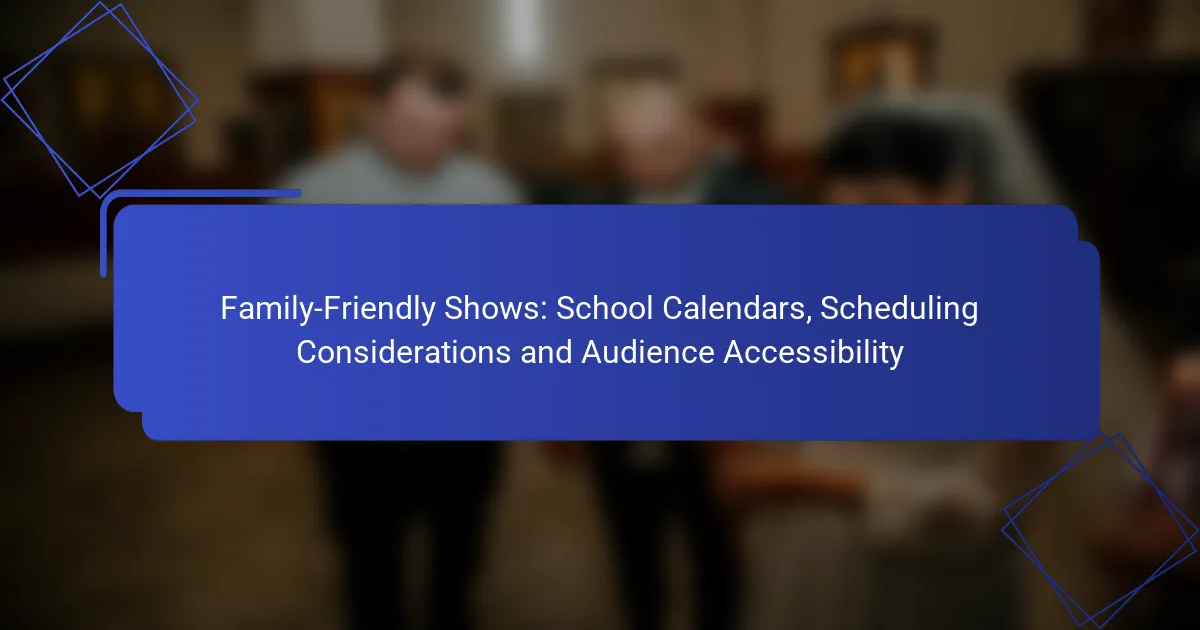Theater programming that embraces seasonal themes significantly boosts audience appeal by connecting performances to cultural events and holidays. By aligning productions with these moments, theaters not only attract a wider audience but also strengthen their ties to the community, ensuring that performances resonate with local values and experiences.

How does seasonal programming enhance theater audience appeal?
Seasonal programming enhances theater audience appeal by aligning performances with cultural events and holidays, making them more relevant and engaging for potential viewers. This approach not only attracts a broader audience but also fosters a deeper connection between the theater and the community.
Engaging themes attract diverse demographics
Seasonal themes resonate with various demographic groups, as they often reflect shared cultural experiences and values. For instance, holiday-themed shows can draw families looking for festive entertainment, while summer productions might appeal to younger audiences seeking outdoor experiences.
By curating a lineup that includes a mix of genres and themes, theaters can cater to different tastes and preferences, ensuring that there is something for everyone. This diversity can lead to increased attendance and a more vibrant theater atmosphere.
Seasonal events boost ticket sales
Seasonal events often lead to higher ticket sales due to the heightened interest around specific times of the year. For example, productions during the winter holiday season typically see a surge in demand, as people are more inclined to attend performances as part of their holiday traditions.
Theaters can capitalize on this trend by offering special promotions, group discounts, or themed packages that encourage larger audiences. Implementing early bird pricing or limited-time offers can further stimulate ticket sales during peak seasons.
Community involvement increases loyalty
Engaging the community through seasonal programming fosters loyalty among theatergoers. When local organizations, schools, or artists are involved in productions, it creates a sense of ownership and pride within the community, encouraging repeat attendance.
Theaters can enhance this connection by hosting community events, workshops, or discussions related to the seasonal themes of their productions. This involvement not only builds a loyal audience base but also strengthens the theater’s role as a cultural hub within the community.

What are popular seasonal themes in theater programming?
Popular seasonal themes in theater programming often reflect cultural traditions, holidays, and the changing seasons. These themes engage audiences by resonating with their experiences and emotions, enhancing the overall appeal of the performances.
Holiday-themed performances
Holiday-themed performances are a staple in theater programming, particularly during Christmas, Halloween, and Valentine’s Day. Productions like “A Christmas Carol” or “The Nutcracker” attract families and individuals looking to celebrate the season through art. These shows often incorporate festive elements, making them a beloved tradition for many.
When planning holiday performances, consider the timing of your production and the target audience. Early promotions can help build anticipation, and integrating local customs can enhance relevance and appeal.
Summer festivals and outdoor shows
Summer festivals and outdoor shows capitalize on the warm weather and longer days, drawing in larger crowds. These events often feature a mix of genres, from musicals to Shakespearean plays, allowing for diverse programming that can cater to various tastes. Outdoor settings create a relaxed atmosphere, encouraging community engagement.
To maximize audience turnout, consider scheduling performances during weekends or holidays. Offering food and drink options can enhance the experience, making it more enjoyable for attendees.
Fall productions focusing on cultural heritage
Fall productions often highlight cultural heritage, coinciding with events like Thanksgiving and various harvest festivals. These performances can showcase local stories, traditions, and historical narratives, fostering a sense of community pride and connection. Productions that celebrate cultural diversity can attract a wider audience and promote inclusivity.
When selecting plays for fall, prioritize works that resonate with local history or themes. Collaborating with cultural organizations can provide valuable insights and enhance authenticity, making the production more impactful for the audience.

How can theaters assess cultural relevance in programming?
Theaters can assess cultural relevance in programming by actively engaging with their audience and analyzing local cultural dynamics. This involves gathering feedback, observing trends, and collaborating with community stakeholders to ensure that productions resonate with the values and interests of the community.
Audience surveys for feedback
Conducting audience surveys is a direct method for theaters to gauge cultural relevance. Surveys can include questions about preferred themes, genres, and specific cultural interests, allowing theaters to tailor their programming accordingly.
To maximize response rates, consider offering incentives such as discounted tickets or exclusive previews. Aim for a diverse sample to capture a wide range of perspectives, ensuring that feedback reflects the community’s varied demographics.
Analysis of local cultural trends
Analyzing local cultural trends helps theaters understand the prevailing interests and values within their community. This can be achieved through monitoring social media, local news, and community events to identify themes that resonate with audiences.
Additionally, theaters should consider seasonal events, holidays, and cultural celebrations that may influence programming choices. Regularly reviewing this information can help theaters stay relevant and responsive to changing cultural landscapes.
Collaboration with local artists and organizations
Collaborating with local artists and cultural organizations can enhance a theater’s cultural relevance. These partnerships can provide insights into community needs and preferences while also enriching the programming with authentic local voices.
Engage with local artists through workshops, co-productions, or community events. This not only fosters a sense of ownership among local stakeholders but also attracts audiences who feel a connection to the work being presented.

What are the best practices for selecting seasonal themes?
Best practices for selecting seasonal themes involve understanding audience interests, evaluating past performances, and aligning with community events. This approach ensures that the programming resonates with viewers while maximizing attendance and engagement.
Researching audience preferences
Understanding audience preferences is crucial for selecting seasonal themes that attract viewers. Conduct surveys, focus groups, or analyze social media trends to gather insights into what themes resonate with your target demographic. Pay attention to age groups, cultural backgrounds, and interests to tailor your offerings effectively.
Utilize online platforms and ticket sales data to identify popular genres and themes from previous seasons. This information can guide your programming decisions, ensuring that you align with what your audience is eager to see.
Evaluating past performance data
Analyzing past performance data helps in making informed decisions about seasonal themes. Review ticket sales, audience feedback, and critical reviews from previous productions to gauge what worked well and what didn’t. Look for patterns in attendance during specific seasons or events.
Consider creating a performance matrix that compares different themes and their success rates. This can help identify which themes consistently draw larger audiences and which may need rethinking or modification.
Incorporating community events
Incorporating local community events into your seasonal programming can enhance relevance and appeal. Align your themes with local festivals, holidays, or cultural celebrations to draw in community members who may not typically attend theater productions. This can create a sense of shared experience and boost attendance.
Collaborate with local organizations or schools to promote joint events or themed performances. This not only enriches your programming but also fosters community engagement and support, making your theater a cultural hub.

How can theaters leverage social media for seasonal programming?
Theaters can effectively use social media to enhance seasonal programming by creating targeted campaigns that resonate with their audience. By engaging with followers through creative content and interactive features, theaters can boost attendance and foster a sense of community around their productions.
Targeted advertising campaigns
Targeted advertising campaigns on platforms like Facebook and Instagram allow theaters to reach specific demographics based on interests, location, and behavior. By analyzing audience data, theaters can tailor their ads to promote seasonal shows, ensuring they attract the right crowd.
For instance, a theater might create ads highlighting a holiday-themed performance, targeting families within a certain radius. Setting a budget of a few hundred dollars for a short campaign can yield significant returns in ticket sales.
Engaging content showcasing behind-the-scenes
Sharing behind-the-scenes content on social media can generate excitement and deepen audience engagement. This includes sneak peeks of rehearsals, interviews with cast members, or insights into set design, which can make followers feel more connected to the production.
Theaters can utilize stories, reels, or live sessions to showcase this content, encouraging followers to share and comment. Consistent posting in the weeks leading up to a seasonal show can keep the audience engaged and eager to attend.
Interactive audience polls and contests
Interactive polls and contests can significantly enhance audience participation and interest in seasonal programming. Theaters can ask followers to vote on their favorite past performances or suggest themes for future shows, creating a sense of involvement.
Additionally, running contests with ticket giveaways or merchandise can incentivize sharing and increase visibility. A simple poll asking which holiday classic to stage next can spark conversations and drive ticket sales when the chosen show is announced.

What role do partnerships play in theater programming?
Partnerships are essential in theater programming as they enhance resources, broaden audience reach, and increase cultural relevance. Collaborating with various entities allows theaters to create more diverse and engaging productions that resonate with the community.
Collaborations with local businesses
Collaborating with local businesses can provide theaters with financial support and in-kind donations, such as materials or services. For instance, a local restaurant might offer catering for an event in exchange for promotional opportunities, creating a mutually beneficial relationship.
These partnerships can also help attract new audiences. By cross-promoting events, both the theater and the business can leverage each other’s customer bases, increasing visibility and attendance.
Co-productions with other theater companies
Co-productions with other theater companies allow for shared resources and expertise, which can lead to higher quality productions. This collaboration can involve sharing costs, talent, and even audiences, making it a cost-effective strategy for theaters of all sizes.
For example, two regional theaters might join forces to produce a larger-scale musical, pooling their resources to create a more impressive show that neither could manage alone. This approach not only enhances the production value but also fosters a sense of community among theaters.
Sponsorship opportunities for seasonal events
Sponsorships for seasonal events can significantly boost a theater’s budget while providing sponsors with valuable marketing exposure. Local businesses often seek to align themselves with cultural events, especially during peak seasons like holidays or summer festivals.
Theaters should consider offering tiered sponsorship packages that provide varying levels of visibility and engagement, such as logo placements, program ads, or exclusive event access. This strategy can attract a range of sponsors, from small businesses to larger corporations, maximizing funding opportunities.



